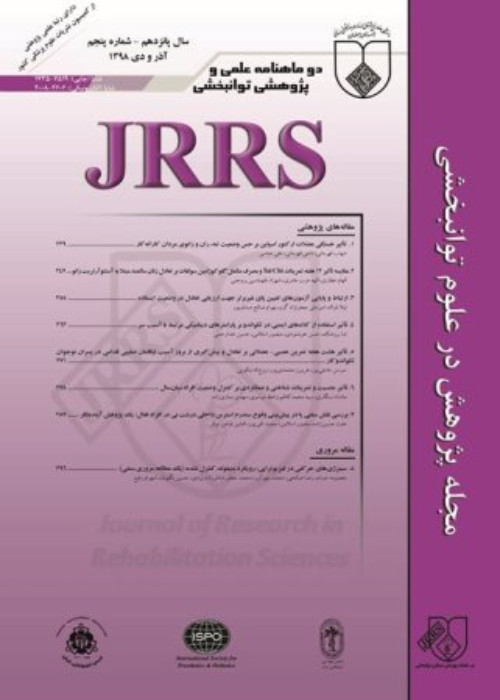A Comparative Study of Electromyography Activity of Selected Lower Extremity Muscles in Badminton Players with Functional Ankle Instability during Single-Leg Landing: A Cross-Sectional Study
Functional ankle instability is one of the most common sports injuries and causes disruption in neuromuscular control and intensity of muscle activity. Therefore, the aim of this study was to compare the electromyographic (EMG) activity of selected lower extremity muscles in badminton players with functional ankle instability in the feed forward and feedback phases during single leg landing with that of healthy players.
This cross-sectional study was conducted on 30 male badminton players (15 people with ankle functional instability and 15 people without ankle functional instability). First, their maximum voluntary contraction (MVC) was measured. Then, they stood on a platform of 30 cm height, and took several steps to reach the jumping place, from there they landed on one leg with the dominant leg, and the electrical activity of the selected muscles was recorded in a feedforward and feedback manner. Independent t-test and Man-Whitney U test were used to analyze the results.
The independent t-test and Man-Whitney U test results showed that EMG activity in the feedforward phase in the tibialis anterior (P = 0.001), gastrocnemius (P = 0.001), and peroneus longus (P = 0.001) muscles, and in feedback phase in the tibialis anterior (P = 0.001), gastrocnemius (P = 0.001) and peroneus longus (P = 0.006) muscles were significantly higher in the group without functional ankle instability than the group with functional ankle instability.
Decreased activity of the lower extremity muscles in the ankle is one of the main reasons for ankle sprains. The EMG activity of the tibialis anterior, gastrocnemius, and peroneus longus muscles in the feedforward and feedback phases is lower in people with functional ankle instability compared to people without ankle instability. Therefore, there are many differences in the intensity of muscle activity between people with functional ankle instability and healthy people.
- حق عضویت دریافتی صرف حمایت از نشریات عضو و نگهداری، تکمیل و توسعه مگیران میشود.
- پرداخت حق اشتراک و دانلود مقالات اجازه بازنشر آن در سایر رسانههای چاپی و دیجیتال را به کاربر نمیدهد.


